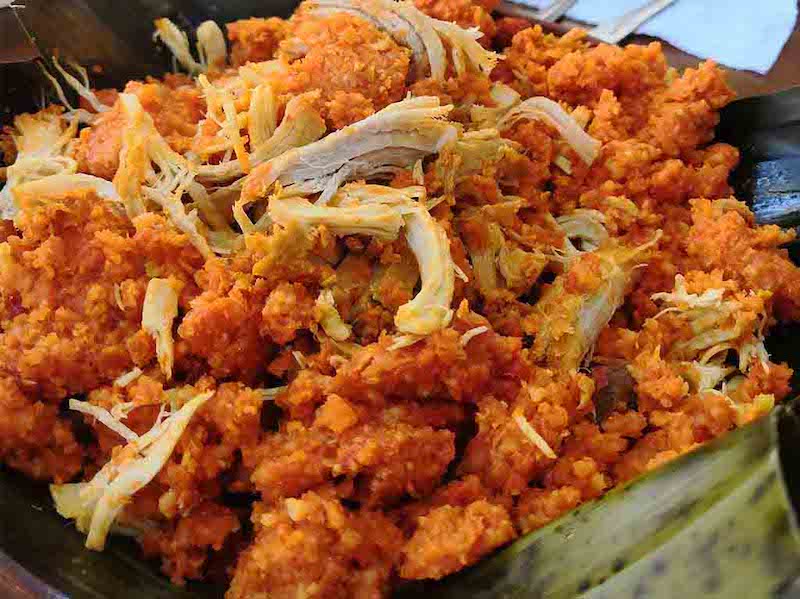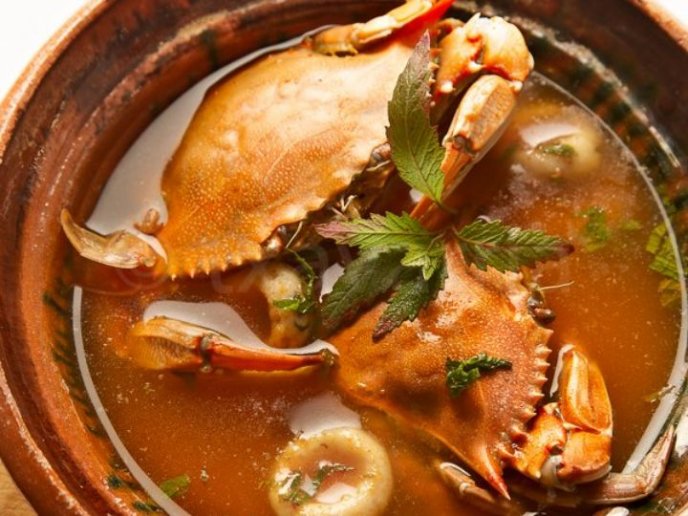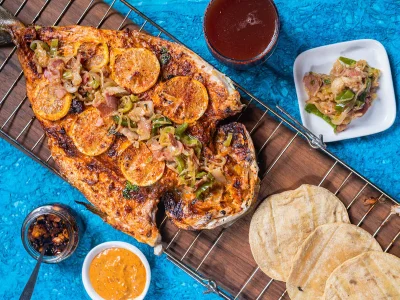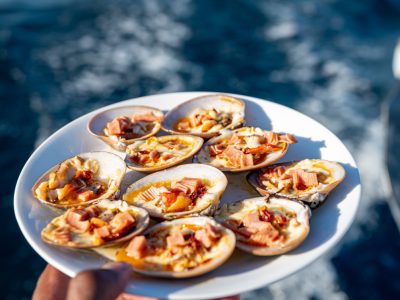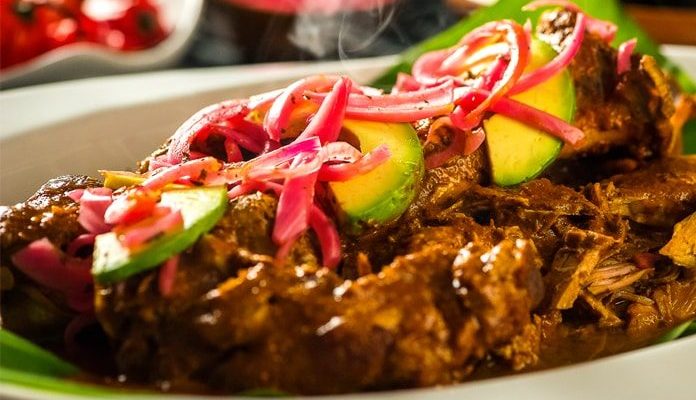
In this gourth chapter of our series, we will take a culinary journey across Mexico’s central region, comprising the states of Querétaro, San Luis Potosi, Hidalgo, Guanajuato, Mexico State, Mexico City (former Distrito Federal), Morelos, Puebla and Tlaxcala. Due to the different flora and fauna found in this region, it is subdivided into north and south for their study.
Welcome to explore the gastronomic traditions of the North Central region.
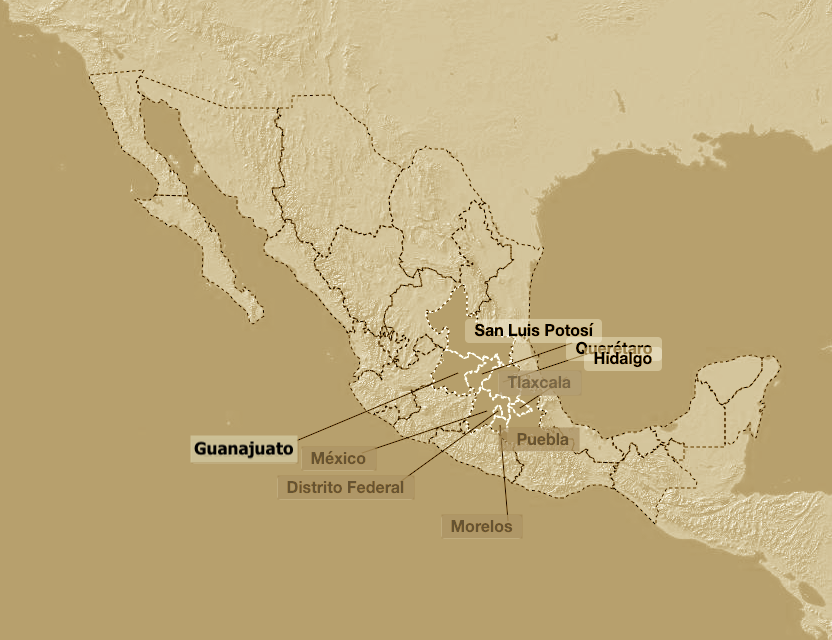
Highlights:
The flora that characterizes this region: agave, avocado, barley, and vine. The most common fauna found: wild cats, hares, badgers, opossums, and rattlesnakes.
Guanajuato
Chichimeca and Otomi indigenous groups inhabited this state. Today, the Chichimecas Jonaz live in a rural community, in a semi-desert area, so their diet is based on corn and beans and complemented with products from the maguey plant such as mead and quiote, nopales, mesquites, biznagas or barrel cacti, chollas, garambullos, palms, quelites and cardons. It is common to find these ingredients in typical preparation.
Most typical dishes have Spanish influence, making adaptations to the regional ingredients. Some preparations are shared with its neighboring states like the Hacienda-style artichokes, barbacoa, baked kid, the michi broth, chilaquiles, the chiles rellenos (stuffed chiles), empanadas, enchiladas mineras, cold cuts, pork beans, broken corn gorditas, menudo, breaded mojarra—a type of bream fish—, nopales with guajillo chile, stuffed nopales, chicken stew, quesadillas or carnitas empanadas, the revoltijo (romeritos), garlic soup, ash and chickpea tamales, chard tamales. Indigenous preparations include pumpkin jam with piloncillo, pacholas and tamale soup.
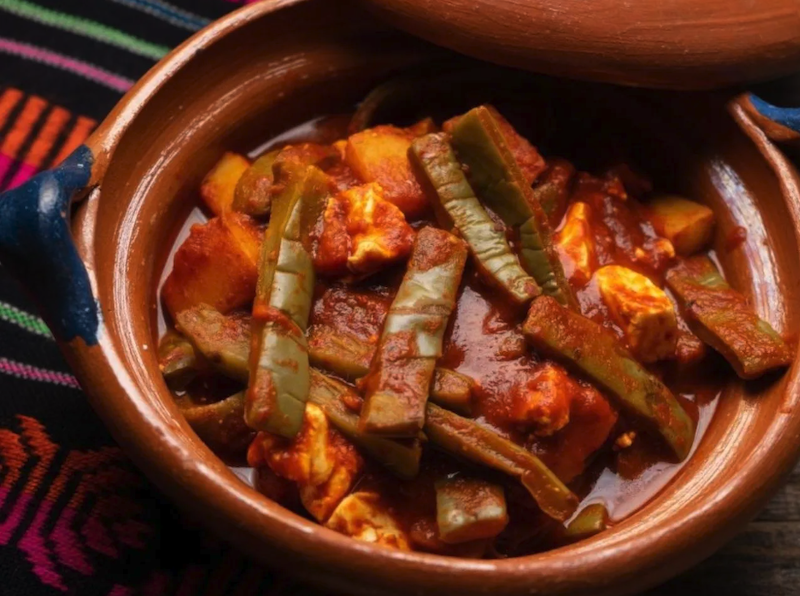
Hidalgo
The state is inhabited by indigenous groups of Nahua, Otomí and Tepehua origin, which present a notable cultural affinity; Despite the fact that each town preserves its own language, a common tradition is maintained. The diet of the Tepehuas is based on corn, beans, broad beans, quelites and some fish such as mojarras, catfish, acocil and acamayas. The Tepehuas grow sugar cane and coffee. On the other hand, the Nahuas, who inhabit the Huasteca Hidalguense region grow corn, beans, chili, sesame, cassava, and fruits such as mango, plum, mamey, and citrus. They also consume badgers, raccoons, rabbits, opossums, doves, and iguanas. Otomi’s diet is based on corn, insects, small mammals, and pulque. In some places, in addition to the milpa, they produce certain commercial crops such as wheat, barley, peanuts, coffee, tomato, and chickpea. The Mezquital Valley is the region of Hidalgo where recipes of indigenous origin have been preserved with the most tremendous success; its cuisine is based on animal and vegetable origin products typical of the region.
Some highlights include escamoles prepared in broths, baked, in sauces, tamales and as a filling for tunas and xoconostles; snails are prepared in salads and pickles. Insects play an important role in the diet of the Otomí, who have influenced the mestizo dishes. Thus, chacas or mesquite bedbugs, chicharras or cicadas, white maguey worms, cupiche worms, elotero worms, red maguey worms, nopal worms, xamues and tantarrias are frequently consumed. Other animals part of their diert include: tadpoles or atepocates, which are eaten fried, roasted or in a mixiote. In the past, axolotls were prepared in mole; Squirrels are cooked in mole de olla or mixiote, and rabbits are prepared in adobo, enchilados, mixiote, and barbecue. The stews of indigenous origin that are most used are the barbecue (Hidalgo is considered to be the cradle of this Mexican dish), the different types of mixiotes, the mormollo, the pipián, the tlalapa, the xagis, the xala and the nopales in xoconostle sauce.
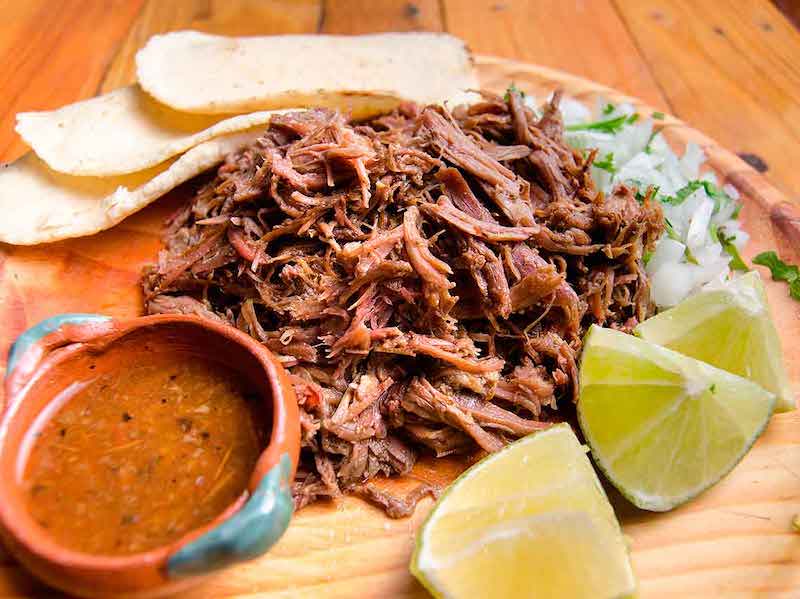
Querétaro
A land of natural contrasts, Queretaro displays a wide variety of ecosystems, from semi-desert to mountain areas, forests, and valleys that have determined the diet habits of its people. Some of the most representative dishes are the runner beans or ayocotes with pork, barbecue, baked kid, fava bean broth, pork with purslane, carnitas, beef tail in sauce, ranchero rabbit, toasted insects called xamues, pickled chili peppers, corn tortillas in a bean sauce or enfrijoladas, gorditas with curd, cracked corn and crumbs, mamanxas or raw and ground corn gordita mixed with grated cheese, cinnamon and piloncillo cooked over banana leaves, mesquitamal a candy made with the flour resulting from the dry pods of the mezquite tree—so common in the area—, garambullo fruit mole, pambazos, and almond chicken. Vegetables are the main ingredients of some dishes made with zucchini, mushrooms and chilacayotes. Traditional sweets include alfeñiques, arequipas, sweet potatoes, chancaquillas —made with caramelized sugar and pumpkin seeds—, and sweet rolls.
The Otomí and Pame ethnic groups have a strong influence in Queretaro’s gastronomy, with representative dishes like acoyo, bolin, beef rinds, roasted red ants, pacholas, ant’s larvae and pupae called escamoles sauce, walnut sauce, peanut tamales, and fried, roasted or raw huamishe or barrel cactus.
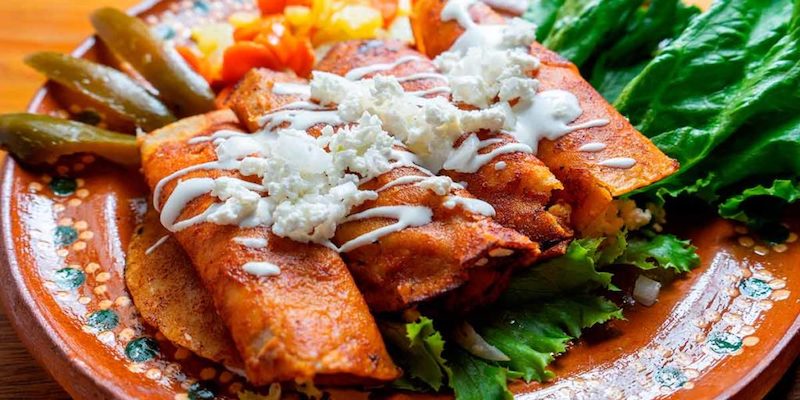
San Luis Potosí
In pre-Hispanic times, the Huasteca had the presence of various indigenous peoples such as the Huastecos, Nahuas, Pames, Totonacas, Chichimecas and Tepehuas. Currently, the most representative ethnic groups in the state are the Teenek or Huastecos and the Nahuas who live in the Huasteca region, in the eastern part of the state, as well as the Chichimecas Jonaz; For their part, the Pame are found in the middle region, a mountainous and desert area.
The economic base of these towns is agriculture, and the culinary customs of these towns and the native ingredients of the region have a direct influence on the gastronomy of the state. For example, some of the most representative dishes of the state originating from the Huasteca are pork marinade, bocoles, broths, cecina, Huasteco chocolate, chickpea candy, enchiladas from the Huasteca, jobito, the patlache, the pemoles, the garlic chicken, the Huasteco tamales and the zacahuil—the largest tamal in Mexico—. The cardon tuna is fresh fruit, especially in colonche, chiquito, melcocha, tuna honey, nochotle, and tuna cheese.
Many regional antojitos, or snacks have been gaining popularity outside of the state. Some of them are bocol, pork and beef rinds, enchiladas from Potosi, Rio Verdean and red, cold cuts, gorditas chinas, curd, oven, broken corn and saucito, molotes, quesadillas potosinas, and tacos colorado.
